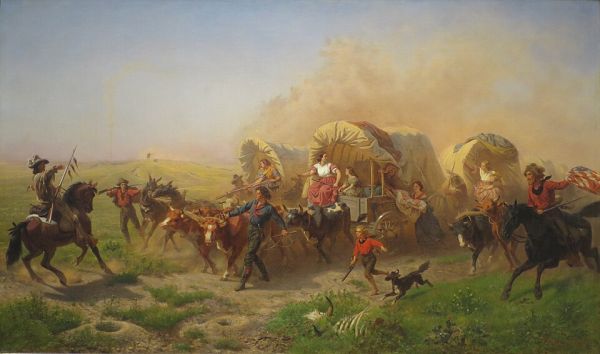Emigrants moving west on the Oregon Trail crossed lands that Indigenous peoples had lived on for thousands of years. The trail passed through villages, hunting areas, and rivers. It also went through areas sacred to Indigenous groups.
Many meetings between emigrants and Indigenous peoples were peaceful. Indigenous people often traded food, clothing, and supplies. Some groups ran ferries across rivers. Others helped manage livestock. A Pawnee or Cheyenne trader could trade buffalo meat for tools. Meanwhile, a Shoshone guide might help a wagon train find water.
More wagons meant more problems for Indigenous groups. Livestock ate the grass that once fed the buffalo. Emigrants cut down trees and used river water that Indigenous villages needed. Diseases like cholera and measles spread quickly and caused many deaths along the way.

Some emigrants distrusted Indigenous peoples. At times, emigrants fired weapons at Indigenous visitors. Sometimes, emigrants demanded revenge for small disputes. Newspapers often stretched the truth, calling these fights “massacres.” In fact, more emigrants died from disease than from conflict. However, some conflicts did become violent, especially when groups like the Sioux and Cayuse defended their lands.
The Oregon Trail changed life for both the travelers and the Indigenous peoples they met. It brought trade and travel, but it also brought sickness and the loss of land.
